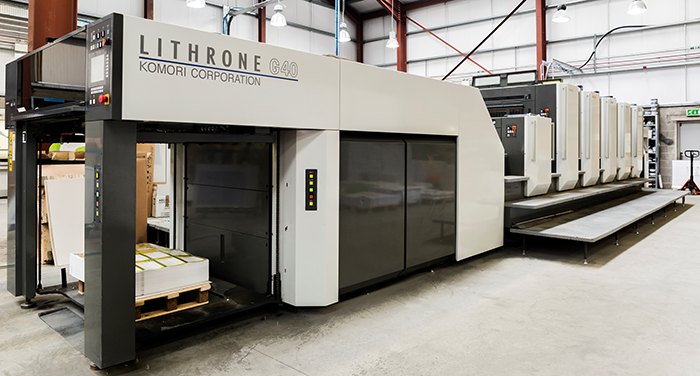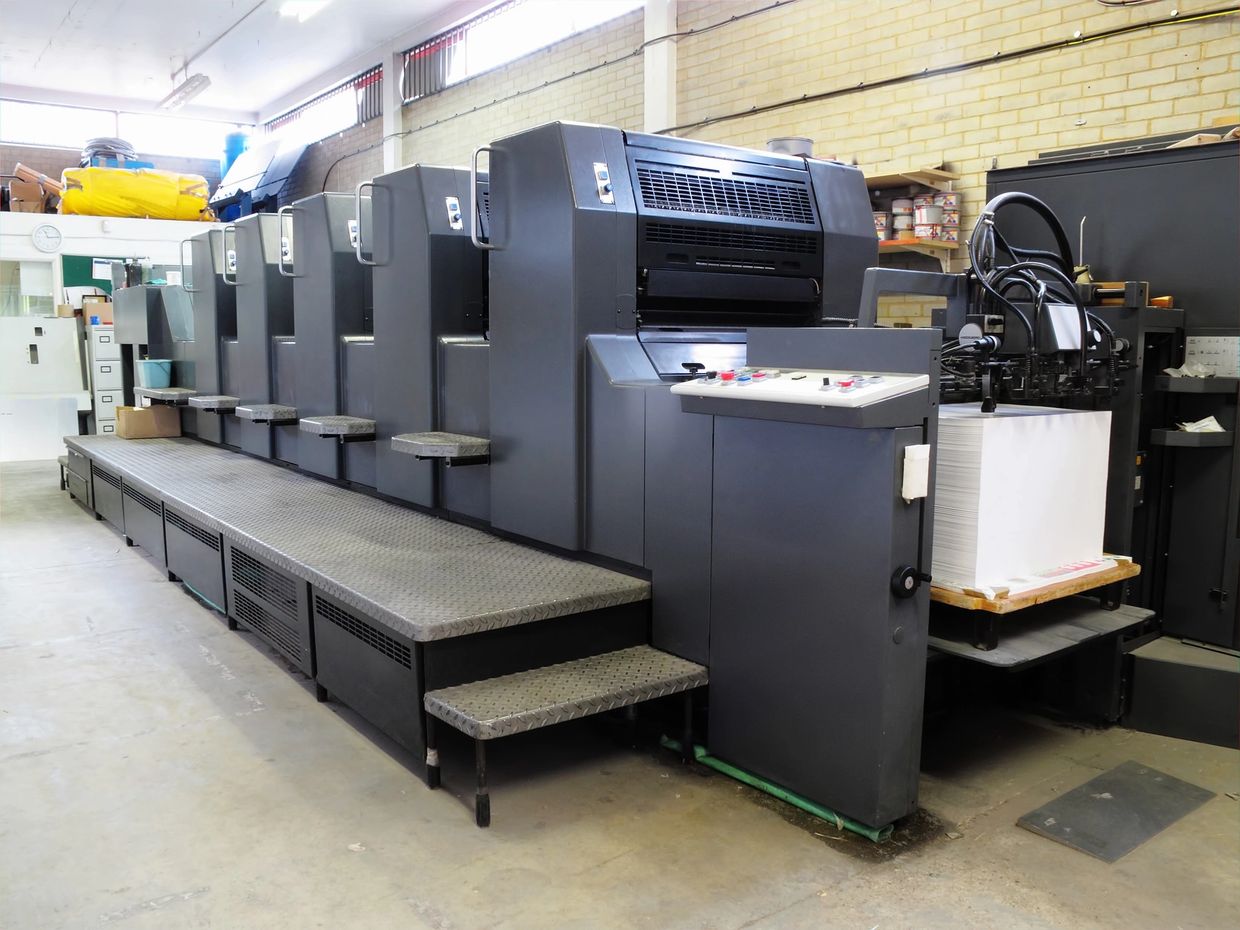The Important Overview to Understanding Litho Printing and Its Applications
Litho printing stands as a substantial technique in the printing industry, rooted in the concepts of oil and water repulsion. This method not only supplies premium images however also deals with various industrial needs. Its applications range from marketing products to packaging, showcasing its convenience. As the market adapts to new technologies, the evolution of litho printing elevates inquiries concerning its future and relevance in a digital landscape. What exists ahead for this withstanding technique?

What Is Litho Printing?
Litho printing, an extensively utilized printing technique, relies upon the concept of oil and water repulsion. This method uses a flat printing surface, typically a metal plate, which is dealt with to assure that the picture areas are receptive to oil-based inks while the non-image areas repel them. The process begins with the creation of a photo on the plate, frequently with drawing or photographic means. When the photo is prepared, the plate is dampened with water, followed by the application of ink. The ink adheres just to the photo locations, enabling precise reproduction of graphics and message. Litho printing is favored for its ability to create high-quality prints with great detail and lively shades. It is frequently made use of in industrial applications, consisting of papers, publications, and packaging, showcasing its versatility and performance in satisfying the demands of modern printing.
The Background of Lithography
Although lithography is a contemporary printing staple, its beginnings trace back to the late 18th century when German playwright Alois Senefelder invented the technique in 1796. Developed as a method for recreating messages and images, lithography utilized a flat stone surface to develop prints via a chemical process. Senefelder's innovation permitted greater adaptability and artistic expression compared to previous printing methods.By the 19th century, lithography acquired prevalent approval, becoming a prominent selection amongst musicians and publishers. It enabled the automation of images, maps, and posters, especially impacting the printing market. The method further evolved with the intro of lithographic presses, boosting effectiveness and quality.As the commercial transformation proceeded, lithography adjusted to meet the needs of industrial printing, paving the way for modern applications. Today, it remains a vital technique in various sectors, consisting of posting, product packaging, and art reproduction.
Just How Litho Printing Works
An essential attribute of litho printing is its reliance on the concept of oil and water repulsion - litho printing. In this process, pictures are moved from a flat surface area, typically a steel or polymer plate, to paper. The plate is dealt with so that the locations meant for printing draw in ink, while the non-image areas repel it due to their fondness for water. The printing starts by dampening the plate with water, which complies with the non-image areas. Subsequently, an oil-based ink is used, sticking only to the desired image areas.When home plate enters into contact with the substrate, the ink is moved, creating a print. The litho printing process can producing high-grade images with fine detail. It is typically made use of for automation because of its performance and consistency, making it a recommended technique for business printing applications
Benefits of Litho Printing
One remarkable benefit of litho printing is its ability to produce top quality images continually, making it a perfect choice for commercial jobs. This printing technique uses a flat printing plate, making certain also ink circulation and sharp details. Litho printing is likewise renowned for its shade accuracy, allowing vivid and true-to-life recreations, which is important for branding materials.Moreover, it supports a wide array of substrates, including paper, cardboard, and even certain plastics, boosting its adaptability. The procedure is cost-effective for big runs, as economic climates of range lower per-unit prices. Additionally, litho printing has a fast turn-around time, enabling efficient manufacturing schedules.Its durability also implies that published products withstand fading, ensuring that the last item maintains its aesthetic charm in time. On the whole, these benefits make litho printing a favored choice throughout various markets, adding to its long-lasting popularity.
Applications of Litho Printing in Company
As businesses progressively look for reputable visit here and top quality printing solutions, litho printing becomes an essential gamer in various applications. This strategy is particularly preferred for creating advertising and marketing materials such as brochures, flyers, and directories, many thanks to its capability to supply lively colors and sharp images. Furthermore, litho printing is frequently employed for packaging remedies, enabling companies to develop attractive tags and boxes that enhance product appeal.In the sector of company identification, litho printing is instrumental in generating expert stationery, calling card, and promotional goods, which help reinforce brand acknowledgment. In addition, it is commonly utilized in the publishing market for printed materials such as publications and magazines, where consistent high quality is paramount. On the whole, litho printing's adaptability and effectiveness make it an important tool for companies intending to connect properly and develop a solid market presence.
Artistic Utilizes of Litho Printing
Litho printing functions as a functional tool in the domain of printmaking, offering musicians an one-of-a-kind approach to reveal their creativity. This strategy enables a variety of creative applications, from traditional prints to contemporary analyses. By exploring the subtleties of litho printing, musicians can harness its distinctive qualities to boost their job.

Printmaking Techniques Overview
The artistry of printmaking includes a diverse series of techniques, with litho printing attracting attention for its distinct technique to image production. This technique counts on the principle of oil and water repulsion, enabling artists to draw directly onto a limestone or steel plate with a greasy tool. When prepared, the plate is dampened and inked, transferring the picture onto paper with stress. Litho printing is celebrated for its capability to produce great details and abundant tonal variations, making it a popular choice among artists. Additionally, the procedure is versatile, suiting both conventional strategies and modern adaptations. This versatility enables litho printing to bridge various artistic designs, enriching the printmaking landscape with its unique characteristics and abilities.
One-of-a-kind Artistic Applications
Checking out the unique creative applications of litho printing reveals its amazing adaptability in numerous innovative areas. Musicians utilize litho printing to create complex layouts and appearances, permitting expressive and in-depth works. The process helps with the recreation of vivid colors, making it ideal for illustrations and art prints. Numerous contemporary artists embrace lithography for its capacity to combine typical methods with contemporary principles, causing ingenious artwork. Additionally, litho printing is commonly used in the manufacturing of restricted edition prints, improving their worth and appeal. The tactile high quality of litho prints adds a distinct measurement, drawing in collectors and art enthusiasts alike. In general, litho printing stays a substantial tool for creative expression, linking classic techniques with modern creative thinking.
The Future of Litho Printing in a Digital Globe
As the printing market advances, litho printing faces the obstacle of integrating electronic innovations to remain appropriate. Techniques concentrated on digital assimilation, along with patterns in sustainability and technology, will certainly shape its future - litho printing. Comprehending these dynamics is important for sector stakeholders looking to adjust to a rapidly changing landscape
Digital Combination Approaches
A growing number of litho printing companies are embracing electronic assimilation approaches to remain affordable in an increasingly digital landscape. By integrating electronic process, these companies can streamline processes and boost effectiveness. This assimilation permits real-time information monitoring and boosted interaction between divisions, decreasing turn-around times significantly. Additionally, electronic tools allow better personalization and personalization of published products, dealing with certain consumer demands. Companies are likewise embracing hybrid printing services that combine traditional litho techniques with digital technologies, supplying flexibility in production. Leveraging information analytics aids in recognizing market patterns and customer preferences, enabling services to make enlightened choices. On the whole, Web Site electronic assimilation is becoming necessary for litho printing companies intending to innovate and reply to progressing market requirements.
Sustainability and Innovation Patterns

Regularly Asked Inquiries
What Materials Are Frequently Utilized in Litho Printing?
The materials commonly utilized in litho printing consist of aluminum plates, ink, water, and paper. Each part plays a vital duty in the printing procedure, making sure premium image recreation and effective transfer of ink onto the substrate.
How Does Litho Printing Compare to Digital Printing?
Litho printing offers superior color uniformity and quality for large runs, while electronic printing succeeds in brief runs and personalization. Each approach has unique benefits, accommodating different requirements based upon production scale and cost-efficiency.
What Is the Common Turn-around Time for Litho Printing Projects?
The common turnaround time for litho printing projects varies, generally ranging from a few days to several have a peek at this website weeks. Elements affecting this timeframe include task complexity, amount, and required completing procedures, influencing total production routines.
Can Litho Printing Accommodate Customized Sizes and Formats?
Litho printing can certainly accommodate customized dimensions and formats, enabling adaptability in layout. This flexibility enables customers to accomplish unique print end results tailored to their particular demands, enhancing the general efficiency of their projects.
What Are the Environmental Impacts of Litho Printing?
The environmental impacts of litho printing consist of resource consumption, chemical usage, and waste generation. Nonetheless, improvements in sustainable practices and environmentally friendly materials are progressively minimizing these negative effects, promoting a much more ecologically liable strategy to printing.
Comments on “How to Prepare Artwork for Optimal Results in litho printing”